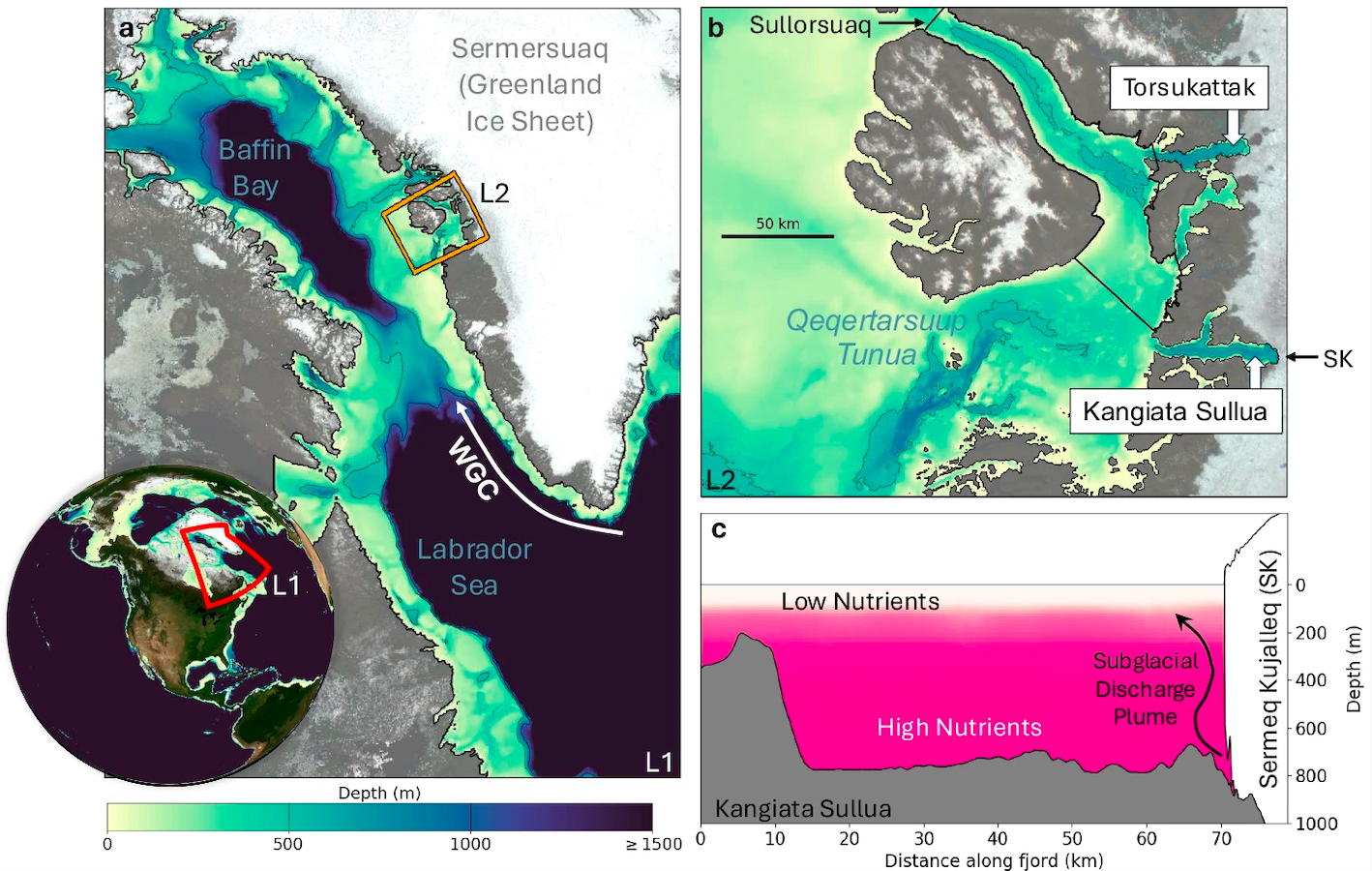Published August 5, 2025, Assistant Professor Michael Wood and Dr. Dustin Carroll report a compelling discovery in Nature Communications Earth & Environment. Their study reveals that Greenland's coastal waters experience a secondary summertime phytoplankton bloom, driven by subglacial discharge from the island's most active glacier. As meltwater rises and stirs up nutrient-rich deep waters, it fuels this vibrant bloom—shedding new light on how Arctic marine ecosystems respond to ongoing ice-sheet melt.
"Increased melt from Greenland’s most active glacier fuels enhanced coastal productivity"
Abstract
Seasonal phytoplankton blooms in Greenland’s coastal waters form the base of marine food webs and contribute to oceanic carbon uptake. In Qeqertarsuup Tunua, West Greenland, a secondary summertime bloom follows the Arctic spring bloom, enhancing annual primary productivity. Emerging evidence links this summer bloom to subglacial discharge from Sermeq Kujalleq, the most active glacier on the Greenland Ice Sheet. This discharge drives localized upwelling that may alleviate nutrient limitation in surface waters, yet this mechanism remains poorly quantified. Here, we employ a high-resolution biogeochemical model nested within a global state estimate to assess how discharge-driven upwelling influences primary productivity and carbon fluxes. We find that upwelling increases summer productivity by 15–40% in Qeqertarsuup Tunua, yet annual carbon dioxide uptake rises by only ~3% due to reduced solubility in plume-upwelled waters. These findings suggest that intensifying ice sheet melt may alter Greenland’s coastal productivity and carbon cycling under future climate scenarios.
Wood, M., Carroll, D., Fenty, I. et al. Increased melt from Greenland’s most active glacier fuels enhanced coastal productivity. Commun Earth Environ 6, 626 (2025). https://doi.org/10.1038/s43247-025-02599-1


